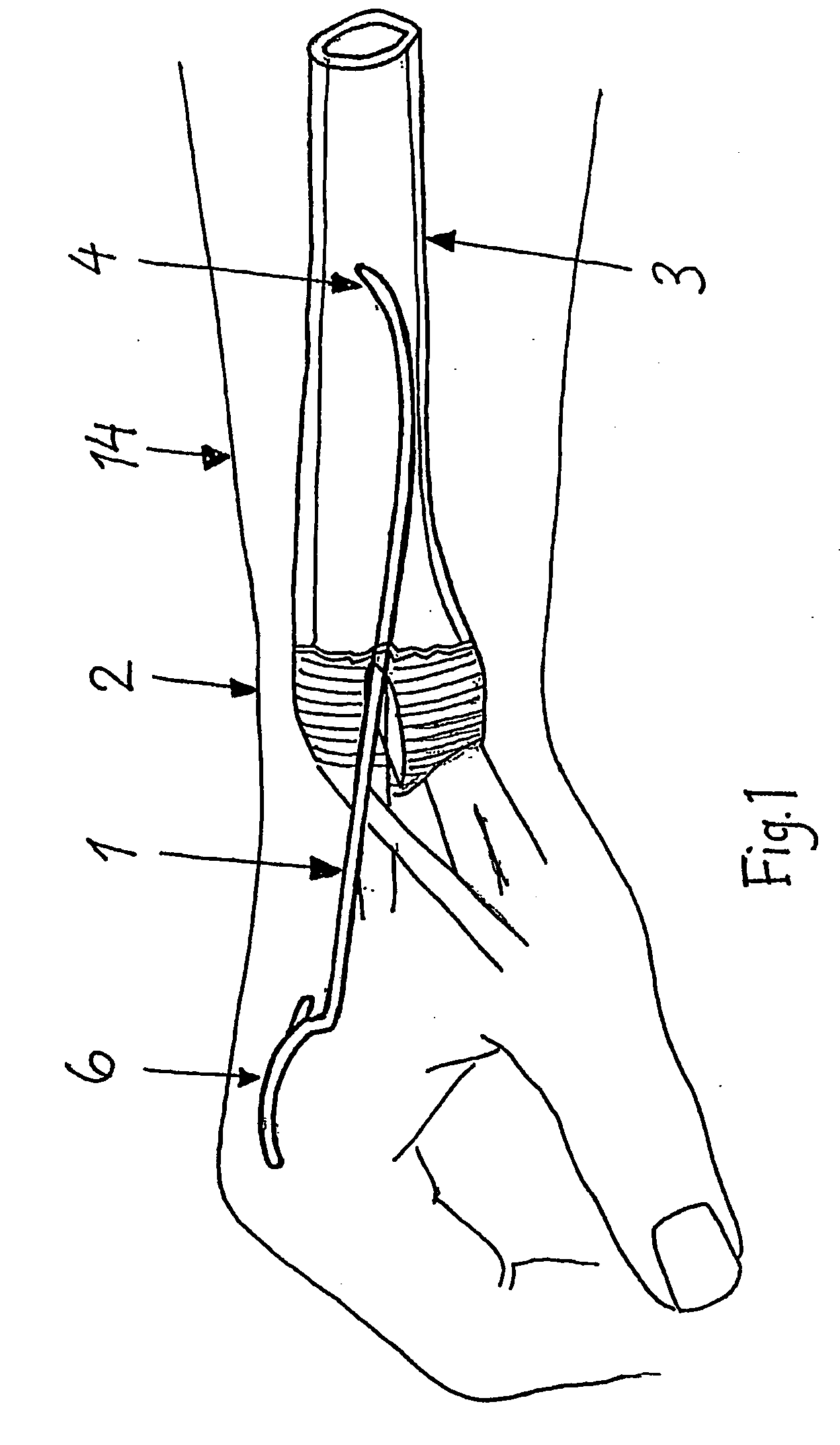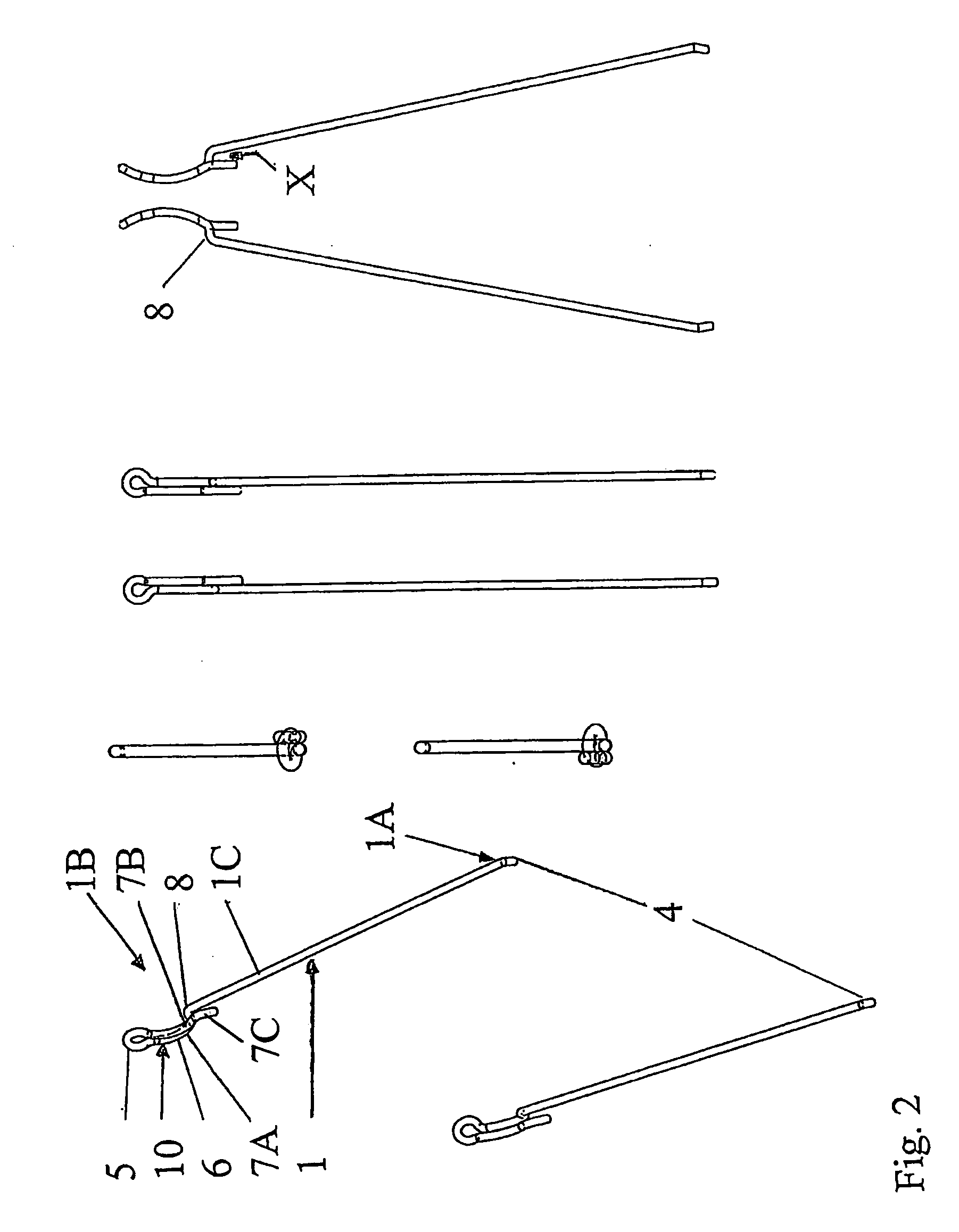Surgical Fixation Pin
- Summary
- Abstract
- Description
- Claims
- Application Information
AI Technical Summary
Benefits of technology
Problems solved by technology
Method used
Image
Examples
Embodiment Construction
[0036]Referring to FIG. 1, a surgical fixation pin 1 in accordance with the present invention is included in a simple and effective system to be used as an aid when treating irregular distal radius and ulna fractures 2. The pin 1 is arranged to achieve maximum stability by using the smallest possible operation and implant. Pin 1 is further arranged to make it easy to insert through the fracture 2 and will be distinctive when inserted against the edge of the fracture in the proximal bone fragment in position in bone 3. A fixing device in the form of bone screw 9 (see FIG. 14) is ideal to be utilized together with a fixation pin of the type described herein to further achieve the stability of the fracture site. The insertion of the pin 1 is done through a small incision, as is shown in FIG. 1.
[0037]A pin 1 (FIGS. 1-4); 101 (FIGS. 5-10); 201 (FIG. 14) that is ideal for use with fracture 2 on bone 3 in arms 14 or other body parts, to achieve support and stability to the bone 3 when heal...
PUM
 Login to View More
Login to View More Abstract
Description
Claims
Application Information
 Login to View More
Login to View More - R&D
- Intellectual Property
- Life Sciences
- Materials
- Tech Scout
- Unparalleled Data Quality
- Higher Quality Content
- 60% Fewer Hallucinations
Browse by: Latest US Patents, China's latest patents, Technical Efficacy Thesaurus, Application Domain, Technology Topic, Popular Technical Reports.
© 2025 PatSnap. All rights reserved.Legal|Privacy policy|Modern Slavery Act Transparency Statement|Sitemap|About US| Contact US: help@patsnap.com



